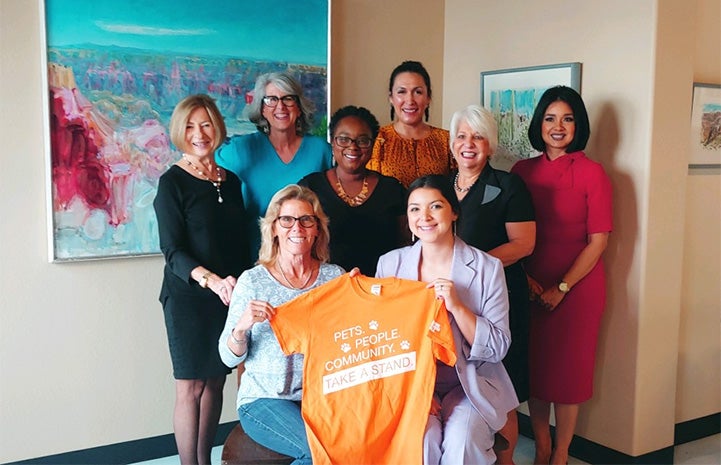Grassroots animal advocacy for getting to no-kill by 2025

An urgent plea to help a dog in need. Sixty cats rescued from a hoarding situation. New breed-discriminatory proposals targeting pit bulls. A new chain of pet stores selling dogs from puppy mills. More than five million pets entering shelters every year and around 733,000 of them being killed just because they don’t have safe places to call home.
You’re just one person. How on earth are you supposed to make a difference?
Thinking globally and acting locally to achieve no-kill
If you’re passionate about helping homeless pets and reducing the number of animals entering and being killed in shelters, the best thing to do is to start with your own community. When you take a big idea like achieving no-kill nationwide by 2025 and put it into practice right where you live, you can turn what feels like an insurmountable problem into an achievable goal.
Familiarizing ourselves with the local shelters and other animal welfare groups operating in our own communities. Getting to know key decision-makers in our cities and counties. Educating ourselves about the lifesaving needs and animal issues specific to where we live. These are the ways we can begin to act locally to create a compassionate, no-kill community and be a lifesaving model for others.

Community-based action to save pets in shelters
The 2025 Action Team, launched last year by Best Friends, is a proactive network of animal advocates working together to create positive, sustainable change in their communities for pets and the people who love them. In just a few months, this lifesaving force has grown to nearly 10,000 members, hailing from communities all over the country — and we’re just getting started.
At the heart of this grassroots work is getting out of the shelters and our comfort zones and connecting with people around shared ideas and common goals. Action teams put people at the center of the lifesaving equation because they understand that for any movement to be successful, it must be inclusive and fueled by a broad range of individuals.
When we work to involve more people in lifesaving activities (rather than lecturing about them) — such as increasing access to affordable spay/neuter and other veterinary services, ending breed discrimination, adopting breed-neutral policies and effectively managing our community cats — we can create a coalition of like-minded people who can accomplish anything.
One of my favorite stories about community-minded people creating big change for local pets is the work Yessy and Yobeli Banda are doing in Texas. These two amazing women are strengthening the lifesaving work they’re doing in their shelter by engaging with fellow community members outside of the shelter.
Getting smart and strategic with our animal advocacy
Every individual pet we rescue, care for, foster or adopt is important to us. And that’s why we need to look beyond our daily interactions with individual animals to the big-picture, long-term change that could prevent those animals from ever needing to be saved in the first place.
Join the 2025 Action Team today and get all the information and support you need to get your local lifesaving ball rolling! You can also check out the Grassroots Advocacy Toolkit to start your planning.
In the meantime, here are some wise words and sage advice from Kenny Lamberti, our director of grassroots advocacy:
